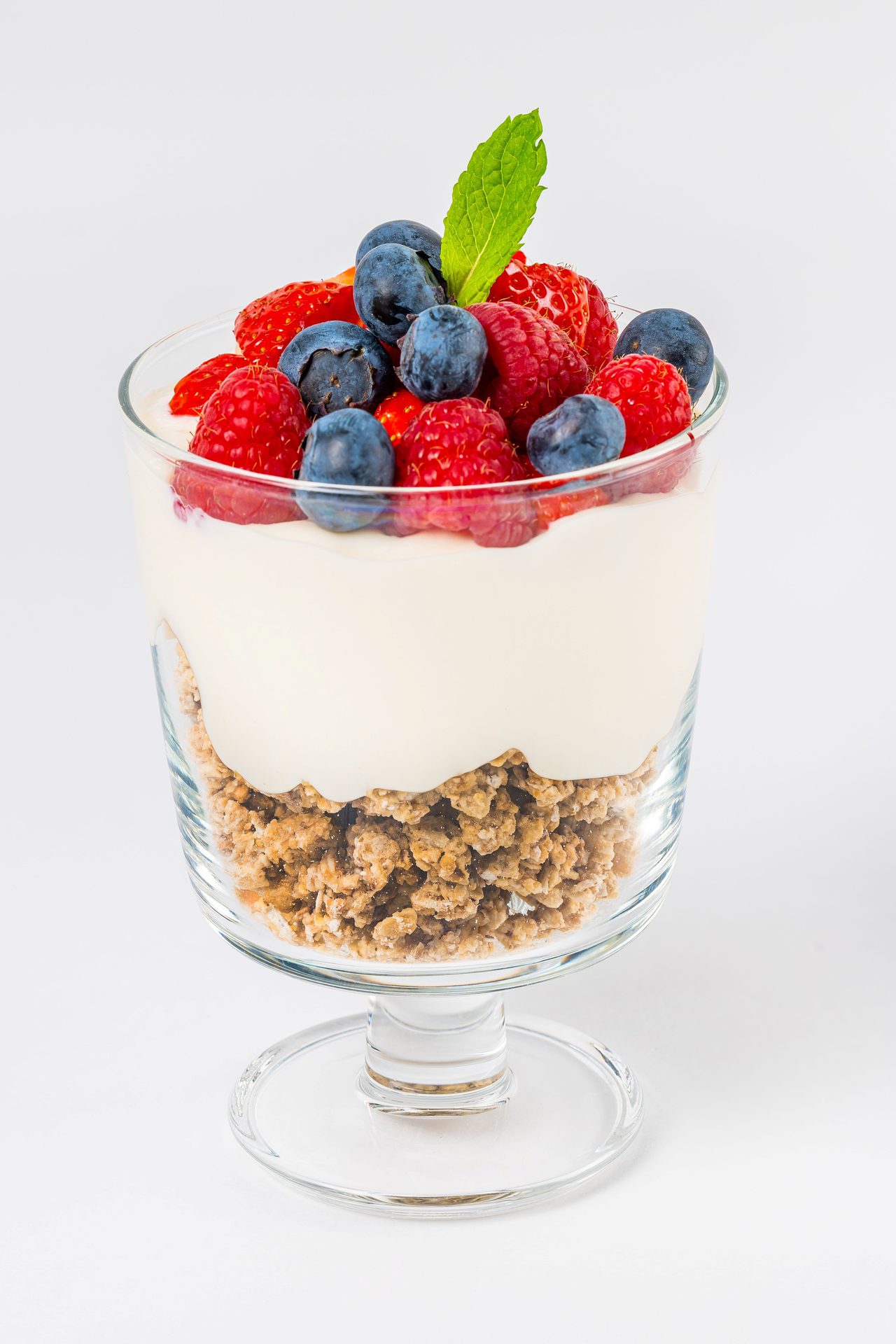OUTLOOK REPORT
Fueling up with protein
Nadiya Senko / iStock / Getty Images Plus
When it comes to ingredients, protein is one of the most important ingredients naturally found in dairy foods like milk, cheese, cottage cheese and yogurt. Yet, to capitalize on consumers’ obsession with protein, many dairy brands, along with food and beverage companies, are adding more protein to bars, yogurts, ready-to-drink (RTD) shakes and smoothies, sports nutrition drinks/powders and new products.
“Protein is having a major moment right now, especially in the dairy category. Milk, yogurt and cheese have long been known for their natural protein content, but brands are really leaning into the ‘more is better’ trend,” says Julie Johnson, president of HealthFocus International, a market research and strategic consultant company specializing in consumer health and nutrition trends.
Johnson points to a 2024 HealthFocus US Trend Study conducted by the Des Plaines, Ill.-based company that found that 39% of consumers say that adding protein has become more important in their diet over the past year.
By Barbara Harfmann, Senior Editor
Adding protein to diet ranks as top dietary priority, behind only reducing sugar.
Fueling up with protein
“This is nearly double those saying the same just four years ago, (21% in 2020),” Johnson says. “And it’s ranked as the No. 2 dietary priority, just after reducing sugar.” (For more information, see chart).
Younger consumers particularly are leading the charge, she adds. “While protein has long been associated with physical health, its benefits are now extending to areas like mental wellness and immunity, solidifying its role in today’s health landscape,” Johnson notes.
In fact, protein remains the most universally sought nutrient. Wayzata, Minn.-based Cargill’s latest Power of Protein proprietary research finds 61% of consumers say they increased their protein intake in 2024 (up from 48% in 2019). The study also reveals 57% of consumers who study nutrition labels check protein content, says Allison Leibovich, Cargill’s marketing manager for dairy and dairy alternatives.
“Given today’s on-the-go lifestyles, snacks like yogurt and sports nutrition shakes offer easy ways to meet consumers’ protein needs between meals,” Leibovich says. “Nearly two-thirds (63%) of consumers specifically look for protein in their snacks, while a third (34%) consider ‘high in protein’ a very important factor when selecting snacks.”
Patricia Hammond, senior marketing manager for dairy and specialized nutrition, North America, at Chicago-based ADM, notes that among new dairy products positioned toward performance nutrition, 85% claim to be high in protein, she says, citing Mintel’s 2025 report, “Dairy Poised to Mainstream Sports Nutrition.”
Hammond also concurs that dairy is a natural source of complete protein. “[Dairy] contains all essential amino acids required by the body. This makes it an attractive option for health-conscious consumers looking for wholesome, nutrient-dense options,” she says.
Hammond highlights yogurt, both spoonable and drinkable, for being at the forefront of the protein movement, witnessing a surge in innovation, particularly with brands launching new products catering to this trend.
“Recent market research finds about half of Generation Z and millennial shoppers have recently purchased yogurt drinks, and additional research indicates 40% of drinkable yogurt launches over the last year featured a high-protein claim,” Hammond says, citing Kantar Profiles and Mintel. “These offerings not only appeal to those seeking functional health benefits, but also offer assured taste credentials, and combine convenience and versatility.”
New products containing protein are popular. Siggi’s, a brand of Lactalis, introduced new Protein Packs in two flavors: Blueberry Pomegranate and Strawberry Acai. The Icelandic-style yogurt (skyr) is known for its simple ingredients, high protein content, and low sugar content. The Protein Packs contain 11 grams of protein per pack and are crafted with real fruit and no artificial flavors or added sweeteners, the New York-based company says.
In April, TruMoo, a farmer-owned brand from Dairy Farmers of America (DFA), debuted its higher protein, lower-sugar whole chocolate milk. TruMoo Zero provides 13 grams of protein, which is 50% more protein than regular chocolate milk and no added sugar, the company says. Made with real dairy milk, TruMoo Zero is lactose-free and naturally delivers eight grams of complete protein from dairy, plus five more grams from an innovative milk protein concentrate.
In September 2024, Lactalis Canada launched its OLYMPIC Organic kids' drinkable yogurt in Strawberry and Strawberry-Banana. Made with high-quality organic milk from grass-fed cows, real fruit purees, and 50% less sugar than other leading drinkable yogurts, the kids’ yogurt is certified organic, free from GMOs or synthetic pesticides, artificial ingredients and preservatives, the company says.
Plant-based proteins make gains
While several experts state non-dairy, plant-based alternatives don't have the nutritional value of dairy, the global market for plant-based dairy alternatives is projected to reach $28 billion by 2030, growing at a compound annual growth rate (CAGR) of 8.7%, according to Bologna, Italy-based Valsoia.
Jennifer Adams, director of ingredient technology and applications at St. Louis-based IFPC, explains that soy is considered a high-quality protein and comparable to whey/casein as evaluated through the Protein Digestibility Corrected Amino Acid Score (PDCAAS).
“While other plant-based proteins may have gaps in their amino acid profile, those can be balanced through blending with other plant-based proteins,” Adams notes. “Besides improving the nutritional benefits, we have found our customers find value in blends from a functional and organoleptic standpoint as well. For example, off flavors can be mitigated while still reaching the desired attributes through blends.”
Cargill’s Leibovich is seeing some brands push past previous boundaries, achieving double-digit grams of protein per serving. She suggests that advances in plant proteins are making these gains possible, with a new generation of better tasting and more soluble ingredients.
The company’s portfolio includes PURIS 2.0 pea protein, which enables a trifecta of benefits: higher protein levels, improved taste and enhanced solubility. The ingredient also offers a smoother, creamier texture.
“We’ve used PURIS 2.0 to craft plant-based dairy alternative beverages that match protein levels of dairy-based options,” Leibovich explains. “Manufacturers can also use PURIS pea protein to up the protein content of ready-to-mix protein powders, plant-based Greek yogurts, frozen desserts and more.”
Siggi’s, a brand of Lactalis, introduced new Protein Packs that contain 11 grams of protein per packs and are crafted with real fruit and no artificial flavors or added sweeteners, the New York-based company says. Photo courtesy of siggi’s.
While plant-based dairy alternatives like oat, almond or soy milk don’t offer the same protein profile as dairy, there’s still a lot of appeal, especially for people following vegan or lactose-free diets, HealthFocus International’s Julie Johnson says.
New plant-based innovations are being released. After 15 years of dedicated research and development, Los Angeles-based Axiom Foods launched its Oryzatein 2.0 Rice Protein to significantly advance the formulation of infant foods and beverages without grittiness or flavor interference.
Julie Johnson notes this ingredient is a prime example of innovation because it’s addressing a common problem with plant-based proteins — grittiness and flavor interference.
“The goal is to make plant-based proteins more palatable and functional, especially in sensitive applications like infant foods,” she says. “On the dairy side, innovations are pushing the boundaries as well. We’re seeing more focus on improving the nutritional profile of dairy proteins — whether it's enhancing bioavailability or finding more sustainable ways to produce them. Advances in fermentation and precision fermentation (think dairy proteins made via fermentation without animals) are exciting areas to watch as they offer new solutions for both dairy and plant-based markets.”
ADM’s Hammond suggests that blended protein yogurts, RTD shakes and frozen novelties tap the best characteristics from each protein source, with soy protein being a “complete protein” with a credible PDCAAS (protein digestibility-corrected amino acid score).
Moreover, plant-based sources like soy, pea and wheat can work together as base solutions that provide elevated nutritional value and creamy dairy profiles with no offnotes, Hammond adds. “ADM’s soy and pea proteins are clean-tasting and highly functional, working well alongside traditional dairy proteins like whey isolates or milk concentrates to support protein fortification and a delectable sensory experience.”
Yogurt is one of several dairy products that contains ample amounts of natural protein. Photo courtesy of Cargill.

Yet, dairy-based protein products, especially whey and casein, continue to dominate in both conventional and sports nutrition categories.
Angela Johnson, MS, RD, dietary and nutrition insights manager at HealthFocus International, breaks down a few of the powerhouse proteins in dairy:
• Whey Protein: Known for its fast digestion, whey is the go-to for athletes and fitness enthusiasts. It's rich in essential amino acids and helps with muscle repair and growth.
• Casein Protein: Casein digests slowly, providing a steady release of amino acids. It's often used in nighttime protein shakes for muscle repair while you sleep.
• Lactoferrin: This one is more unique — it’s a protein found in milk with immune-boosting properties. It helps with the absorption of iron and has antibacterial and antiviral benefits.
“Other proteins that play roles include alpha-lactalbumin (supports growth and development in infants) and beta-lactoglobulin (helps with the body’s immune system),” Angela Johnson says. “These proteins are key because they provide various health benefits, from muscle maintenance to immune support. They’ve become a major part of sports nutrition, functional foods, and products aimed at different demographics.”
Shifting consumer dietary habits
IFPC’s Adams notes that rising health-conscious consumers are increasingly interested in nutritional food and sustainability. “There is strong evidence that consumer awareness of nutrition is driving dairy innovation. For instance, North American consumers are increasingly prioritizing products with high protein, low/no sugar, and natural ingredients. (Innova),” she says. “The reports focus on consumer demand, product innovation, and positioning trends. Innovation in subcategories like yogurt and alternatives drives market action.”
A common through-line between shifting consumer dietary habits is the desire for a “return to nature” across food and beverage categories, Hammond states. This bodes well for dairy applications championing traditional dairy protein sources as well as protein from plant-based solutions such as soy, pea and wheat, along with wholesome ingredients like flax and quinoa.
Cargill experts also are witnessing a market normalization in the plant-based space as traditional dairy and dairy alternatives share the spotlight.
“This doesn't mean plant-based is fading, rather the frenzy to launch new products has slowed. Plenty of quality plant-based products remain,” Leibovich concludes. “The result is a more inclusive approach to protein, with plenty of space for both animal and plant-based options. Look for future products that emphasize qualities, whether that’s organic, regenerative or protein-rich, over protein source ideology.” DF

In April, TruMoo unveiled its new higher protein, lower sugar whole chocolate milk. TruMoo Zero provides 13 grams of protein, which is 50% more protein than regular chocolate milk and no added sugar, the company says. Photo courtesy of Dairy Farmers of America.

